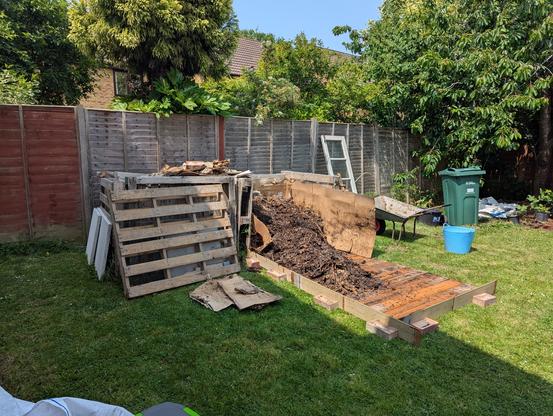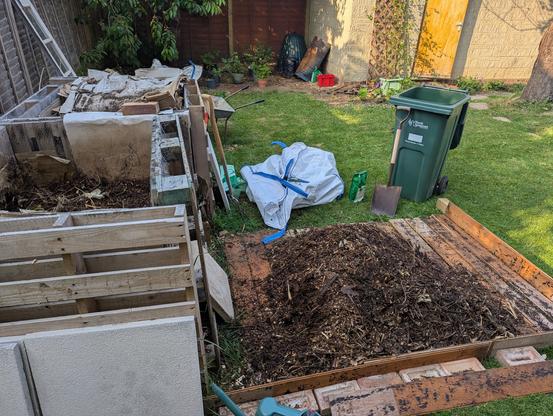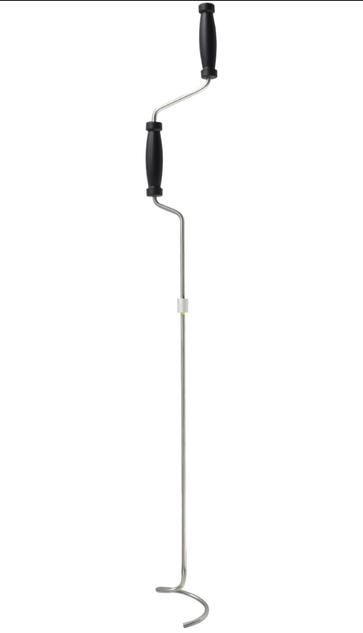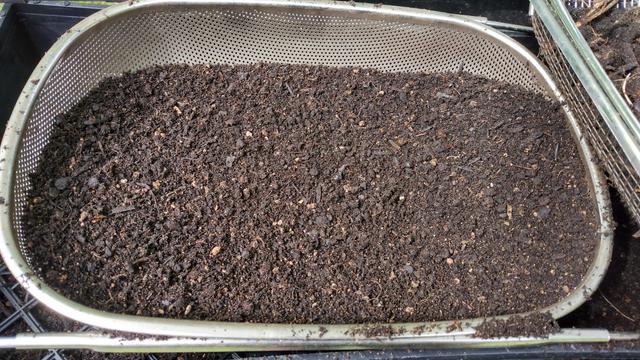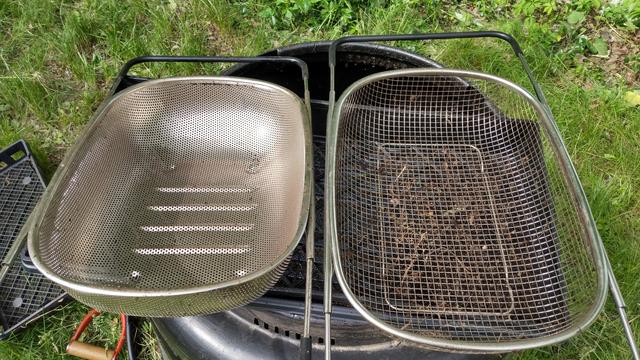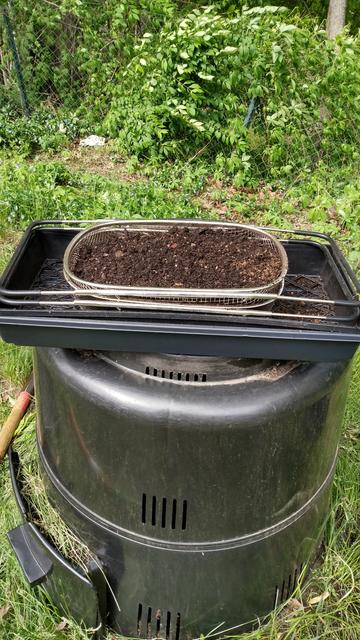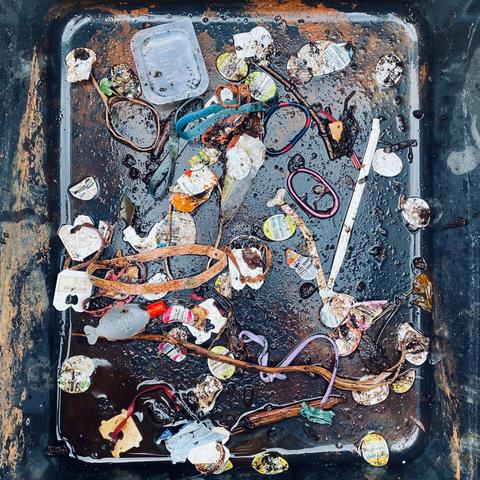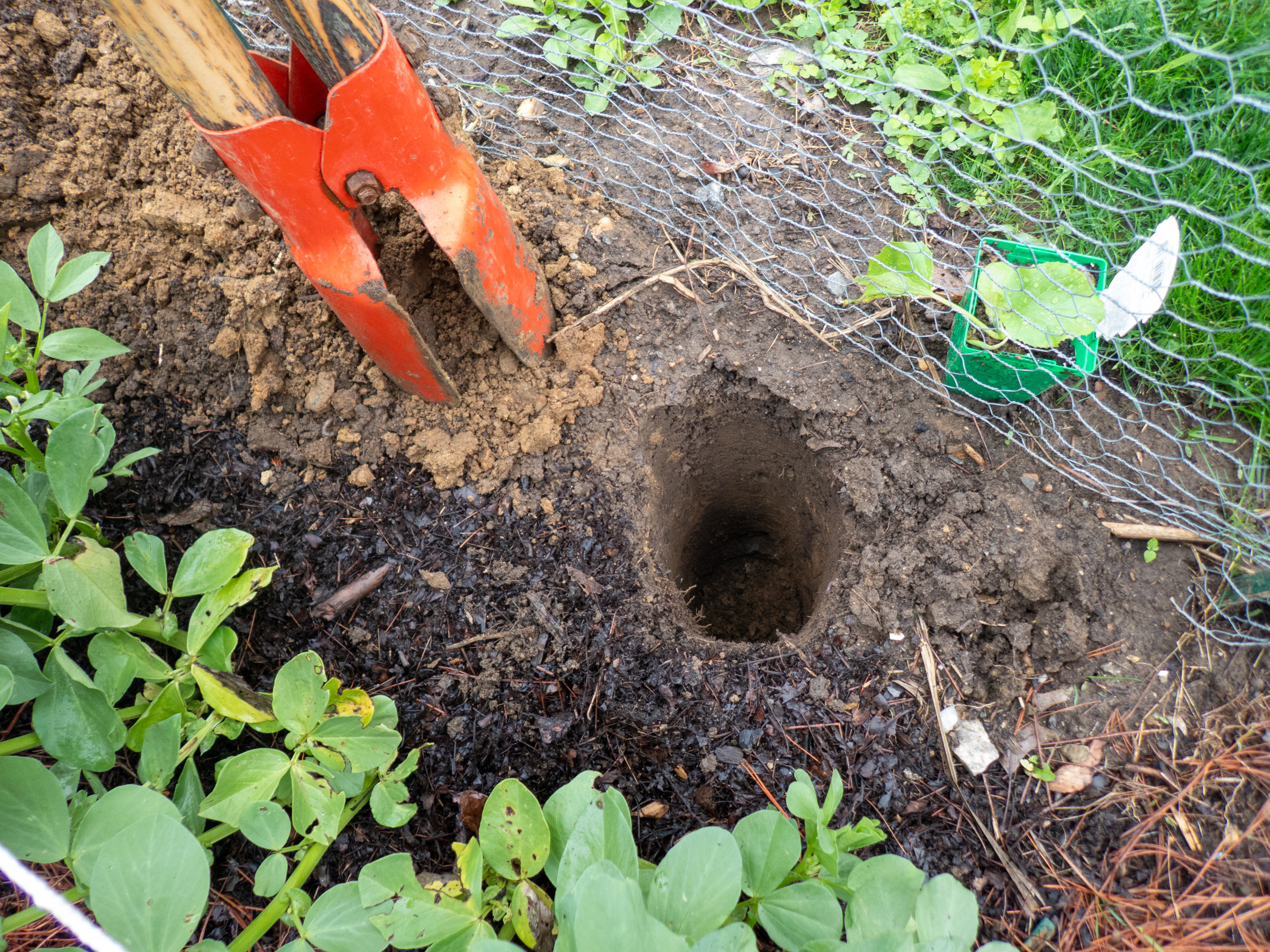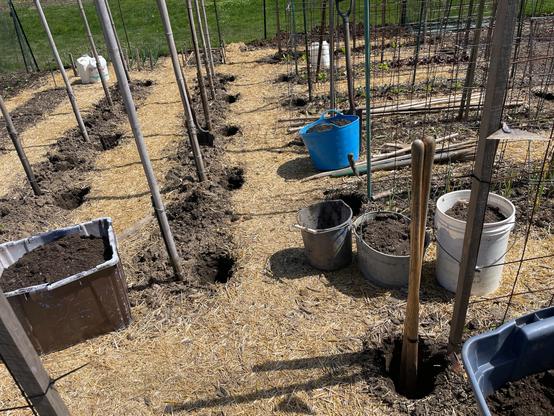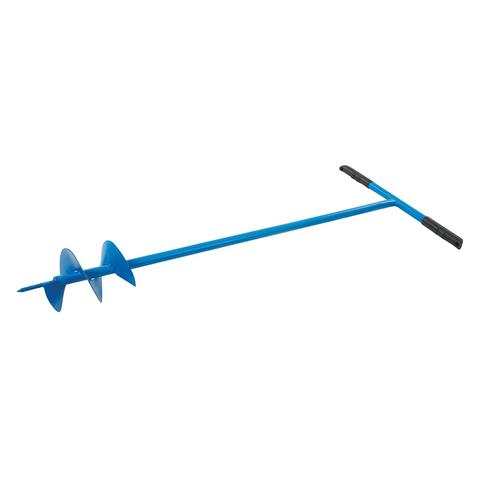Got myself this tool for turning our #compost bins. It's really handy and works great. It doesn't so much "turn" as "churn"
It drills down easily, then you pull it out, rinse and repeat. Combined with the #bokashi it's going to improve our #composting
Dear Friends of Emolution (like Evo but #healthier emotions),
As we may know, the dinos evolved into tweety pies. My efforts today:
- Wombled into #Wimbledon
- Bought two bags of all purpose non peat #compost to help my #wildlife urban farm
- Saw a cinnabar #moth
- Discovered a New #Spring (the water source for Wimbledon Park lake)
- Saw many rare freshwater mussel #shells in a being renovated #London Pond...
- Went to free and open #museum
- Saved the world from fascists, money heads and power grabbers
Was a lovely #quiet #Sunday. Went to visit my Dads #tree (buried underneath it). No gravey stone.
Found my #meadow #flower seed mix had made it to a street cherry tree location, now growing cornflowers...
🦋 💃 😍
Larger chunks (which will go into the working pile), and fine soil (which I'll use for container plants and soil amendment in my gardens). The bits that land in the garden tray go back into the composted pile.
#SolarPunkSunday #Gardening #GardeningHacks #Composting #Compost
One composter is the "working" composter, while the other one contains composted soil. The composted soil sometimes has little bits of stuff in it. Using two sieves, I separate the big bits from the finer soil. The larger chunks go into the working pile, while the sifted ones are what I use for container plants and / or to amend the garden soil. Here are the two sieves, and also is what the combined soil looks like...
#SolarPunkSunday #Gardening #GardeningHacks #Composting #Compost
TBH, I had a few bags of Coast of Maine organic commercial potting soil from last year (trying to wean myself off of peat-based soils), so, rather than waste it, I mixed it with composted soil from my 50 gallon composter (which I ran through a couple of mesh sieves). For seed starting, I sterilized some of the old potting soil, and that seemed to work fine. I hope next year, I will have switch to using coconut coir based seed starter and potting soils (which I'll DIY). I never have enough compost for everything I need (probably because I've cut way down on food waste to begin with, and I don't touch the leaves except in a few spots during late spring cleanup. But I do produce a decent amount for gardening and soil amendment).
Making #Compost from Yard Waste [and food scraps]
"Compost is one of the most valuable resources for enhancing your landscape, and it is virtually free. The leaves you rake, the grass you mow, and the branches you trim are some of the ingredients you can use to make compost. Finished compost is dark and has a pleasant smell. It is produced when organic matter — such as garden, lawn, and kitchen waste — is broken down by bacteria and fungi.
Use compost throughout your landscape: dig it into gardens and flower beds, add it to the soil when renovating your lawn, or put it through a sieve and use it in potting soil."
Learn more:
https://www.pubs.ext.vt.edu/426/426-703/426-703.html
#Gardening #GardeningHacks #OrganicGardening #SolarPunkSunday
A short, but informative piece from #CornellCooperativeExtension on #ContainerGardening
"Container gardening is a great alternative for people who have limited space, poor soil or would like to grow vegetables with less effort. Instead of a plot in your yard, you can grow your plants on a patio, balcony, porch or just about anywhere else as long as there is adequate light. Container gardening helps gardeners avoid some common pitfalls like weed competition, poor drainage, and time required to maintain a conventional garden.
"Suitable containers come in all shapes and sizes and are made of various types of materials but there are a few important requirements. All containers must have drainage holes to ensure healthy roots. They must be large enough to support your plants when fully grown and they must be able to hold soil adequately. Beyond that, the sky is the limit. Some common containers to consider are plastic and clay pots, bushel baskets, barrels, garbage cans, window boxes, milk cartons, tubs and more. Regular and elevated raised bed gardens available from garden supply companies are also very popular.
"There are a couple of very important keys to success in container gardening. Number one on the list is to provide adequate water to your plants. Container gardens will need to be watered more often than conventional gardens once they become established. The larger your container plants get the more often they need water. This becomes especially evident as we get into warm summer days and some plants may require 2-3 applications per day. Frequent watering will wash nutrients from the soil so you will need to feed container plants with either water soluble plant food or slow release fertilizers. Frequent watering also requires that containers drain well.
"A light weight soil mixture is ideal for your container gardens. You can find commercial container gardening soil mixes at your local garden center. Most of these contain various mixtures of peat moss [try and find peat substitutes like coconut coir] , perlite, vermiculite, #compost or other organic materials. Do not use normal garden soil in containers since it is usually too heavy and slower draining.
"If you are growing larger plants like tomatoes in containers be careful to choose varieties that are limited in size. Smaller fruited types or those labelled as determinate would be better choices than tall vining tomatoes. Dwarf cherry tomatoes work exceptionally well in containers. [I grow Sun Gold cherry tomatoes. Easy to grow and tasty!]
"It is easy to underestimate the size of container needed if you are doing this for the first time. If you are using smaller containers like half or one- gallon pots or milk cartons try 2-3 lettuce or spinach plants or maybe one pepper. A five gallon pail will support a smaller growing tomato plant but I usually prefer a 10 or 20 gallon garbage can for large tomatoes, or multiples of other deep rooted plants.
"Plants in containers need much of the care that plants in gardens need. Most vegetables will do best with full sun conditions with the exception of leafy greens that will tolerate some shade. You may need to thin out carrots, radishes, beets and others in containers so they don’t become overcrowded.
"Check your pots at least once a day and more often on hot days. Wilting and drooping of leaves is a sign that water is needed. Tomatoes in containers will be more prone to blossom end rot if they dry out between watering.
"If you are a beginner and want to try something simple you could pick up a patio tomato or salad bowl garden, or herb planter at your local garden center. These are already planted in appropriate containers and just need sun and water. For everyone else, use your imagination and have fun growing fresh produce.
"For more information on container gardening contact:
John Farfaglia, CCE Niagara County Horticulture Educator"
Source:
https://cceniagaracounty.org/gardening/food-gardening/container-gardening
#GrowYourOwnFood #ContainerGardening #SolarPunkSunday #FoodSecurity #Gardening
As composters, we work to feed soil for local food systems. Every week we try to remove as many fruit stickers as we can. These don’t become plant nutrients like the food scraps they come attached to. They persist in soil, get harder to remove with every year that passes, and ultimately are passed back into our food as toxic chemicals.
Please remove stickers and other plastic contaminants before sending your organics to compost.
What are you feeding the soil?
